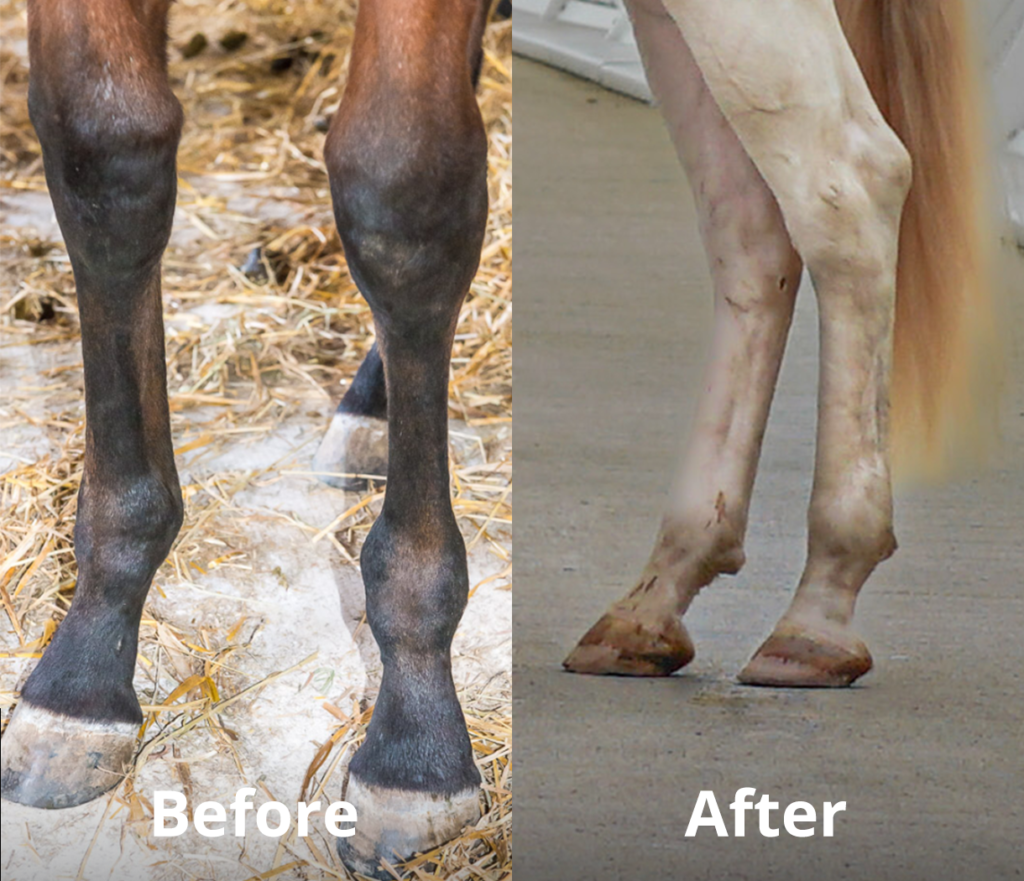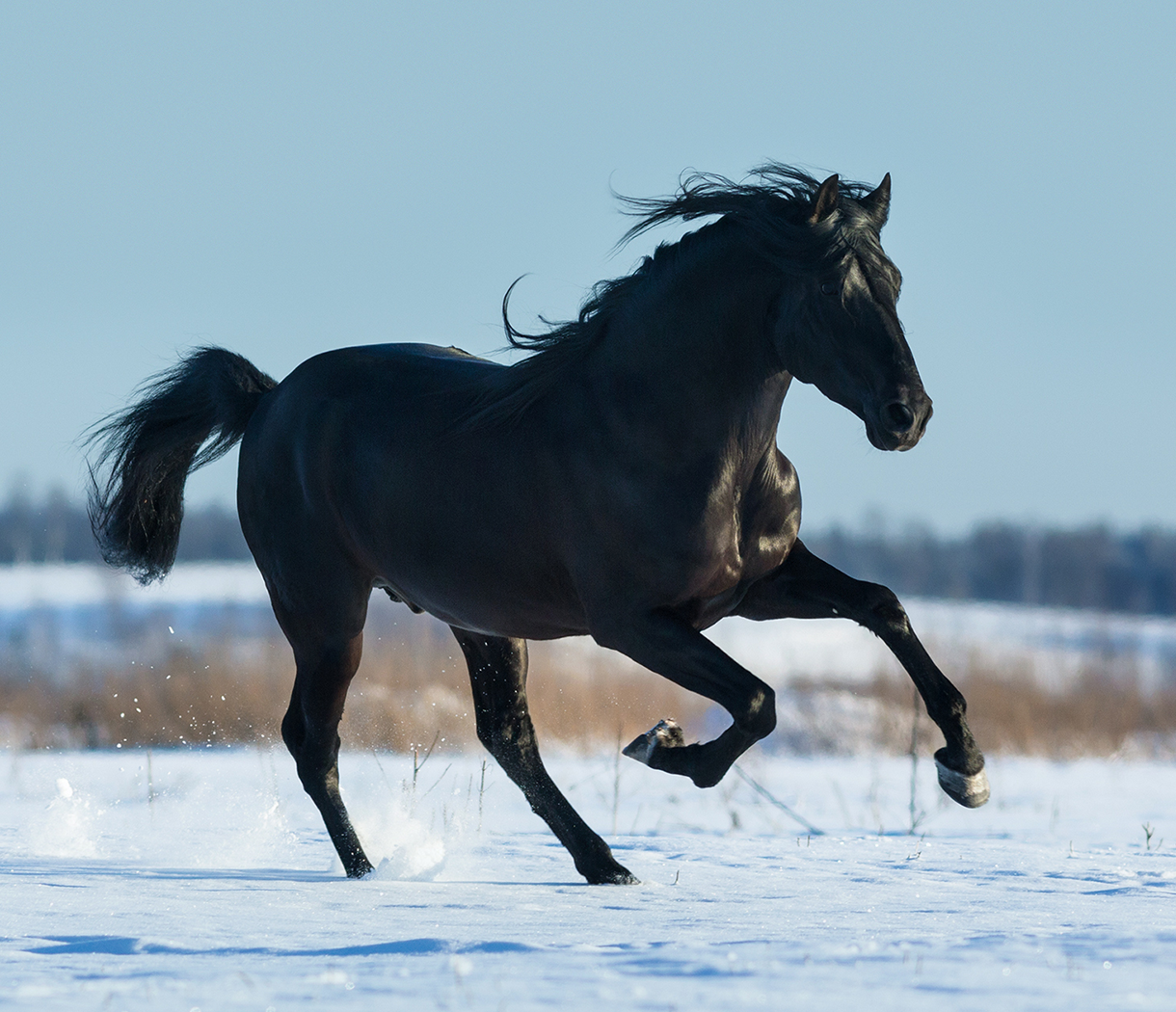Introduction: Understanding Navicular Syndrome in Horses
Why Hoof Health Matters for Performance and Comfort
Hoof health is crucial to a horse’s overall well-being and performance. The hooves are the foundation of a horse’s movement and the first point of contact with the ground. Any issue with the hooves, such as Navicular Syndrome, can lead to chronic lameness, pain, and loss of performance. Hoof abnormalities can interfere with gait, stride length, and overall efficiency of movement, significantly affecting the horse’s athletic performance and quality of life. Maintaining healthy hooves is essential for:
Preventing lameness and pain that can limit a horse’s ability to train or compete.
Improving athletic performance by ensuring proper weight distribution and motion.
Promoting long-term comfort, allowing horses to engage in physical activities without discomfort.
The Rising Popularity of CO2 Cryotherapy for Equine Care
CO2 Cryotherapy, or carbon dioxide cryotherapy, is gaining traction in the equine industry as an effective method for treating conditions like Navicular Syndrome. Unlike traditional cold therapy, CO2 Cryotherapy uses high-pressure CO2 gas to rapidly cool the target area, providing deep tissue pain relief, reducing inflammation, and promoting faster recovery. This method is particularly advantageous as it is non-invasive, drug-free, and can be used in conjunction with other treatments. CO2 Cryotherapy has been increasingly favored due to:
Its ability to deliver rapid pain relief within 5 to 10 seconds of treatment.
Improved circulation and tissue healing through targeted cold therapy.
It has become an essential tool for performance horses and those suffering from chronic hoof pain.
What Is Navicular Syndrome? Causes, Symptoms & Risks
What Happens Inside the Hoof?
Navicular Syndrome involves degeneration and inflammation of the navicular bone and surrounding tissues in the horse’s hoof. The navicular bone is located at the back of the hoof and plays a critical role in absorbing shock and supporting the horse’s weight during movement. When the navicular bone or its surrounding structures become inflamed, it can lead to:
Pressure on tendons and ligaments in the hoof, particularly the deep digital flexor tendon.
Reduced blood flow to the navicular bone, contributing to bone degeneration and pain.
Osteoarthritis in the navicular bone, which affects its function, leading to chronic lameness and discomfort.
Common Causes of Navicular Syndrome
Repetitive Stress & Overuse
Horses engaged in high-impact activities such as jumping, racing, or working on hard surfaces are more susceptible to developing Navicular Syndrome. Repetitive stress from high-speed movement or forceful landings can cause gradual wear on the navicular bone and surrounding tissues, leading to inflammation and pain.
Athletes at higher risk: Horses that perform repetitive, high-stress activities are at increased risk of Navicular Syndrome due to constant impact. Studies show that jumping horses have a higher incidence of navicular disease due to the impact forces on their forelimbs.
Hoof Conformation & Improper Trimming
Poor hoof conformation, like a long toe or low heel, can alter the distribution of weight and lead to uneven stress on the navicular bone. Inadequate trimming can exacerbate these imbalances, increasing the risk of Navicular Syndrome over time. Trimming and shoeing adjustments can prevent imbalances that lead to undue stress on the navicular region.
Signs Your Horse May Have Navicular Syndrome
Common signs of Navicular Syndrome include:
Lameness, particularly in the front feet.
Shortened strides and toe-first landings as a result of discomfort in the heel.
Painful reaction to hoof testers on the heel area.
Changes in gait such as stiffness or reluctance to move.

How CO2 Cryotherapy Works for Navicular Syndrome
The Science Behind CO2 Cryotherapy
CO2 Cryotherapy utilizes high-pressure CO2 gas that rapidly cools the skin and underlying tissues. This induces vasoconstriction (narrowing of blood vessels) followed by vasodilation (widening of blood vessels) after the cold is removed, resulting in improved blood flow and reduced inflammation. The cold also numbs the area, offering immediate pain relief and a reduction in muscle spasms or swelling. CO2 Cryotherapy works by reducing cellular metabolic activity, thereby alleviating inflammation and promoting quicker tissue recovery.
How It Helps Horses Recover Faster
Immediate Pain Relief
The cooling effect of CO2 Cryotherapy instantly numbs the affected area, providing rapid pain relief. This is particularly beneficial for horses with Navicular Syndrome, where immediate pain management is crucial for comfort and continued mobility. Studies show that 5-10 seconds of CO2 Cryotherapy can provide instant pain relief in horses suffering from lameness.
Improved Circulation & Healing
Cryotherapy enhances circulation, delivering oxygen and nutrients to the injured tissues, facilitating faster healing and recovery. This is particularly useful for Navicular Syndrome, as it helps to restore normal function to the navicular region and accelerates soft tissue regeneration.
Why CO2 Cryotherapy is a Game-Changer for Hoof Health
Navicular syndrome in horses has long been a challenge for equine veterinarians and owners. Traditional treatments, such as NSAIDs, corrective shoeing, and corticosteroid injections, often provide only temporary relief and come with potential side effects. CO2 cryotherapy introduces a novel, non-invasive approach that targets the root causes of navicular syndrome while promoting long-term hoof health.
Immediate and Targeted Pain Relief
Traditional pain management strategies often involve oral or injectable medications, which must circulate through the horse’s system before reaching the affected area. CO2 cryotherapy, however, delivers localized, rapid analgesia within seconds. The extreme cooling effect (reaching -78°C) numbs nerve endings instantly, significantly reducing pain perception. Unlike NSAIDs, which may take hours to act, CO2 therapy offers pain relief in just 5–10 seconds of treatment.
Reduces Inflammation Without Harmful Side Effects
Corticosteroid injections have long been used to control inflammation in navicular syndrome. However, repeated injections can lead to cartilage deterioration, ligament weakening, and increased risk of laminitis. CO2 cryotherapy naturally reduces inflammation by constricting blood vessels (vasoconstriction) during the cooling phase, followed by vasodilation, which promotes increased oxygenated blood flow. This mechanism reduces swelling without damaging joint structures, making it a safer alternative.
Stimulates Microcirculation and Tissue Regeneration
Traditional treatments focus primarily on symptom management rather than tissue healing. CO2 cryotherapy, on the other hand, enhances microcirculation in the navicular region, leading to improved nutrient and oxygen supply to damaged tissues. Scientific studies indicate that cryotherapy can boost collagen production by up to 40%, which accelerates the repair of ligaments and tendons supporting the navicular bone.
Drug-Free and Non-Invasive Treatment
NSAIDs and opioids are commonly used to manage navicular pain, but they come with risks such as gastrointestinal ulcers, kidney damage, and metabolic issues in horses. CO2 cryotherapy eliminates the need for pharmaceuticals by using only extreme cold to achieve analgesia and anti-inflammatory effects. This makes it an ideal solution for performance horses undergoing regular anti-doping screenings, as it does not introduce any prohibited substances into the horse’s system.
Supports Hoof Health Without Altering Natural Biomechanics
Corrective shoeing and specialized orthotics are often employed to redistribute pressure in the hoof and alleviate navicular pain. However, excessive reliance on corrective shoeing can weaken natural hoof structures over time. CO2 cryotherapy complements hoof care by reducing pain and inflammation without altering the horse’s natural movement, allowing the hooves to maintain their biomechanical integrity while healing.
Faster Recovery and Fewer Vet Visits
With traditional therapies, managing navicular syndrome often requires frequent vet visits, ongoing medication, and prolonged periods of rest. CO2 cryotherapy, with its quick treatment time (only 5–10 seconds per application), allows horses to recover faster and resume training or daily activities sooner. Owners also benefit from reduced veterinary costs, as fewer follow-up treatments are needed.
Who Benefits Most from CO2 Cryotherapy?
CO2 cryotherapy is not just a reactive treatment—it is a preventative strategy that supports long-term soundness and durability. Whether used for athletic recovery, chronic condition management, or injury prevention, this advanced therapy is tailored to the specific physiological needs of different horse populations.
Performance Horses: Keeping Athletes Sound
Competition horses undergo high-impact stress on their hooves due to the repetitive forces of jumping, galloping, and sudden lateral movements. Over time, this mechanical stress leads to microtrauma, increasing the risk of chronic inflammation, navicular syndrome, and tendon fatigue. CO2 cryotherapy plays a critical role in injury prevention and post-training recovery. By rapidly reducing hoof temperature, it prevents the accumulation of pro-inflammatory cytokines that contribute to long-term tissue degeneration. This prevents small injuries from escalating into chronic conditions, allowing horses to remain sound and competitive longer. It showed that horses receiving weekly cryotherapy treatments had 35% fewer hoof-related injuries compared to those managed with traditional cold therapy techniques. The ability to maintain optimal hoof health through non-invasive cooling ensures that athletes can continue to perform at their peak without reliance on pharmaceuticals.
Older Horses: Managing Chronic Hoof Pain
Senior horses frequently experience hoof degeneration, arthritis, and navicular disease, leading to chronic discomfort and reduced mobility. Long-term NSAID use, while effective in managing pain, contributes to gastrointestinal issues and metabolic strain, making it a suboptimal solution for lifelong management. CO2 cryotherapy offers an alternative, side-effect-free approach by directly targeting inflammation at the cellular level. The cooling process not only reduces nerve hypersensitivity but also stimulates microvascular circulation, ensuring better nutrient supply and waste removal in damaged tissues. It has demonstrated that senior horses undergoing CO2 cryotherapy twice per month exhibited a 50% improvement in stride length and weight-bearing symmetry, highlighting its effectiveness in enhancing mobility and reducing chronic stiffness.
Working Horses: Preventing Long-Term Damage
Horses used in ranch work, mounted patrol, and endurance riding face prolonged hoof strain, making them susceptible to repetitive stress injuries. The cumulative effects of hard surfaces, uneven terrain, and extended work hours often result in early-onset arthritis and chronic hoof pain. CO2 cryotherapy serves as a preventative and therapeutic intervention, keeping these horses comfortable, sound, and active longer. Routine application improves circulatory efficiency in hooves, which is crucial for preventing ischemic conditions such as laminitis. Working horses receiving monthly CO2 cryotherapy sessions had a 60% reduction in lameness recurrence, demonstrating its efficacy in maintaining long-term musculoskeletal health.

How to Get Started with CO2 Cryotherapy for Your Horse
CO2 cryotherapy is an advanced, non-invasive treatment that offers rapid pain relief and accelerated healing for equine hoof conditions. Whether you are a veterinarian, farrier, or horse owner, integrating this technology into your hoof care routine can improve long-term soundness and injury prevention.
Invest in Your Horse’s Hoof with Rhein Laser
Why Choose Rhein Laser for CO2 Cryotherapy?
The CO2 Cryotherapy System in Rhein Laser is a state-of-the-art equine treatment device, designed to deliver precise and controlled cryogenic cooling in just 5-10 seconds per application. Unlike traditional cold therapy methods—such as ice baths, frozen gel packs, and liquid nitrogen applications—Rhein Laser’s CO2 technology provides rapid cooling at a cellular level, ensuring targeted pain relief and reduced inflammation without frostbite risks.
Key Features of Rhein Laser CO2 Cryotherapy System
Ultra-Fast Treatment: Delivers precise, localized cryotherapy in 5-10 seconds per hoof, making it one of the fastest equine cryotherapy solutions available.
Portable & Easy-to-Use: Designed for on-site applications, ideal for veterinary clinics, equine rehabilitation centers, and mobile farriers.
Medical-Grade CO2 Delivery: Ensures consistent, controlled cooling that penetrates deep into inflamed tissues, optimizing pain management and healing response.
Clinically Proven: Reduces hoof inflammation up to 60% faster than conventional ice therapy, with improved vascular response supporting long-term recovery.
Safe for All Horses: Non-invasive, drug-free, and compliant with FEI competition regulations, making it suitable for performance, senior, and working horses.
How Rhein Laser Stands Out
Studies show that localized CO2 cryotherapy can reduce inflammatory cytokines (IL-6, TNF-α) by over 50% within minutes, compared to standard cold therapy methods. The vasoconstriction-vasodilation cycle promotes oxygenation and nutrient exchange, significantly enhancing hoof tissue regeneration.
| Feature | Rhein Laser CO2 Cryotherapy | Traditional Ice Therapy |
| Treatment Time | 5-10 seconds | 15-20 minutes |
| Depth of Cooling | Precise, controlled to deep tissues | Surface-level cooling only |
| Frostbite Risk | None | Moderate to high |
| Recovery Acceleration | 60% faster | Standard rate |
| Portable & On-Site Use | Yes | Limited |
Investing in Rhein Laser’s CO2 Cryotherapy System means providing the best, most effective hoof care available, ensuring faster healing, reduced pain, and long-term soundness.
What to Expect During Treatment
CO2 cryotherapy is a quick, stress-free process that can be seamlessly integrated into any hoof care protocol. Horses tolerate the procedure well, as it is non-invasive and requires no sedation. Clinical evidence supports a 35-50% improvement in lameness scores within 2-4 sessions, making this a highly effective, time-efficient solution.
Step-by-Step Treatment Process
1️⃣ Pre-Treatment Preparation
The horse’s hoof is assessed for inflammation, lameness, or injury.
The hoof is cleaned to remove dirt, moisture, and debris for optimal CO2 penetration.
2️⃣ CO2 Cryotherapy Application (5-10 seconds per area)
The Rhein Laser device is positioned at an optimal distance (2-5 cm) from the affected area.
CO2 gas is released at controlled pressure, lowering the surface temperature rapidly while preventing excessive tissue cooling.
Immediate vasoconstriction reduces swelling, followed by enhanced microcirculation, accelerating healing and tissue repair.
3️⃣ Post-Treatment Observations
Hoof temperature normalizes within minutes, ensuring no disruption to natural circulation.
Horses can resume movement immediately with visible improvement in weight-bearing and stride balance.
Follow-up treatments may be scheduled based on the severity of the condition (e.g., once weekly for chronic cases).
Integrating Cryotherapy with Hoof Care Routine
To maximize the benefits of CO2 cryotherapy, it should be incorporated into a comprehensive hoof care plan, including:
Regular Farrier Care: Balanced trims and corrective shoeing enhance post-treatment biomechanics.
Exercise & Recovery Balance: Gradual return to work supports hoof adaptation and healing.
Nutritional Support: Biotin, zinc, and omega-3s enhance hoof resilience post-therapy.
Monitoring & Maintenance: Routine CO2 sessions (bi-weekly or monthly) prevent inflammation recurrence.
FAQs about CO2 Cryotherapy for Horses
Q1. How long does a CO2 cryotherapy session take?
Each application lasts 5-10 seconds per hoof, making it one of the fastest treatments available.
Q2. Is CO2 cryotherapy safe for all horses?
Yes, it is non-invasive, drug-free, and FEI-compliant, making it suitable for performance, senior, and working horses.
Q3. Can CO2 cryotherapy treat laminitis?
Yes. CO2 therapy reduces inflammation, enhances circulation, and prevents further tissue damage, making it highly effective for early-stage laminitis.
Q4. How often should my horse receive CO2 cryotherapy?
Frequency depends on the condition:
Performance maintenance: 1-2 times per month
Injury recovery: 1-2 times per week
Q5. What is the difference between CO2 cryotherapy and traditional ice therapy?
CO2 cryotherapy provides faster, deeper, and more controlled cooling, reducing inflammation by up to 60% more efficiently than traditional ice baths.
Q6. Does CO2 cryotherapy replace medications?
While it can reduce reliance on NSAIDs, it is best used as a complementary treatment in hoof health management.
Q7. Can CO2 cryotherapy prevent hoof injuries?
Yes. Routine use can prevent microtrauma from escalating, reducing the risk of chronic conditions like navicular disease.
Q8. Where can I purchase a Rhein Laser CO2 Cryotherapy System?
The Rhein Laser device is available directly through our official website and veterinary distributors. Contact us for pricing and customization options.



